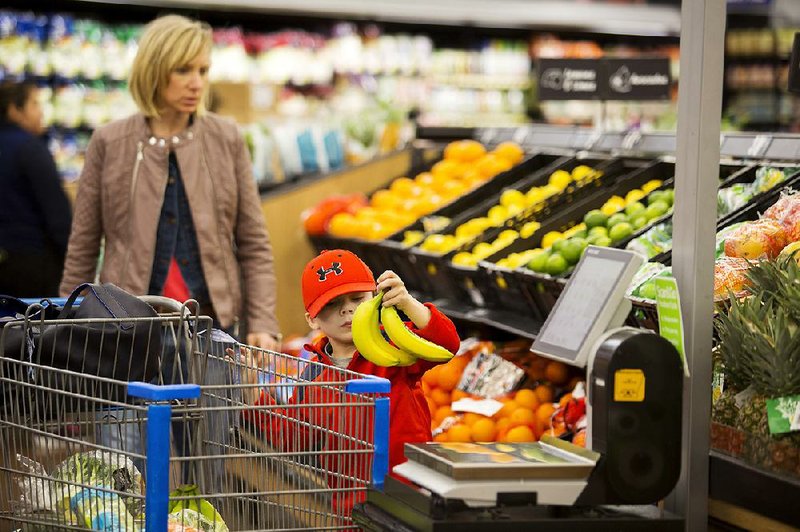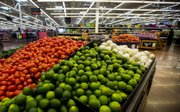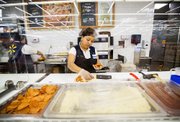Wal-Mart Stores Inc. believes its fresh food department sets the tone for a customer's shopping experience. It is, after all, the first thing customers see when they walk through the door.
So Steve Bratspies, Wal-Mart's chief merchandising officer for U.S stores, told investors that the retailer is continuing its efforts to ensure that quality, selection and presentation leave a good impression.
"It's a huge priority for us because it's a huge traffic driver, and it's very important to our customers," Bratspies said. "We know when we get fresh right the entire box benefits."
Bratspies highlighted some of Wal-Mart's ongoing strategies to improve its grocery business -- specifically in fresh food operations -- during a presentation at the Raymond James Institutional Investors Conference in Orlando, Fla., last week.
The plan, which Bratspies described as "from farm to fork," is part of Wal-Mart's efforts to attract more shoppers to its stores while improving customer satisfaction and loyalty. Grocery purchases accounted for about 55 percent of the retailer's U.S. sales last year, and Wal-Mart U.S. CEO Greg Foran said during last month's fourth-quarter earnings call with reporters that fresh foods would remain a big area of concentration.
"You will see us just continue to lean in -- not just over the next quarter, but over the next several years -- so that we actually deliver to our customers a much improved fresh experience," Foran said.
Bratspies told investors that the look of produce departments is one of the noticeable changes.
The produce display case has been reorganized with leafy green vegetables first to set a "fresher tone." The cut fruit section has been expanded. Lower display cases and tables allow customers to see across the entire section.
Bratspies said the "fresh angle" rollout has been applied to 180 stores for now, and the retailer plans to improve 3,300 stores by the end the year. Wal-Mart operates more than 5,200 stores in the U.S., including about 3,400 supercenters.
"It's going to change dramatically the look and feel of our produce department," Bratspies said.
Wal-Mart hired regional fresh food managers to work with store employees. Wal-Mart spokesman John Forrest Ales said about 30 of the regional managers are in place to help improve the quality and consistency of fresh foods.
The retailer also is evaluating how products are found and where they come from. Bratspies said a full day of inventory has been taken out of the supply chain, as well to help improve the freshness of products.
"It's not just about having fresh product in our store, it needs to be fresh when you take it home," Bratspies said. "When you experience it two, three days later out of your refrigerator, it still needs to be fresh product. How we extend that over time is ultimately our focus."
The online grocery business will remain an emphasis. Wal-Mart's grocery pickup service is available in about 20 markets, and Bratspies said the retailer plans to expand to 20 more this year.
Bratspies told investors that Wal-Mart is making other behind-the-scenes investments, creating a product development and sensory lab in Bentonville. The lab, which he said should be opened in a couple of months, will give Wal-Mart and suppliers a chance to work hand in hand on product development.
"This will be a space that will let us test and learn things across our entire food assortment," said Ales, who added more details would be shared at a later date.
Wal-Mart's efforts to boost grocery sales by improving shopping comes amid what analysts and retail experts describe as stiff competition that isn't getting any easier because of competitors like Aldi, Target or Kroger.
According to the American Customer Satisfaction Index, Wal-Mart's rating among supermarkets was tied for last in 2015. Customer satisfaction slipped 5.6 percent from the previous year.
Edward Jones retail analyst Brian Yarbrough said Wal-Mart must "get better in grocery" because it represents more than half of the retailer's sales. But improvement could prove challenging for Wal-Mart because it has a "pricing problem."
"For years you could count on them to lead in price," Yarbrough said. "That's not the case any more, and the gap has closed with a lot of competitors. They're going to have to go lower. When they do that, there go the profits. They remain in a tough spot."
But retail consultant Carol Spieckerman, president of Spieckerman Retail, said Wal-Mart is doubling down on grocery, and fresh products in particular, because it's the category that will drive traffic to stores.
"Wal-Mart's customers may not demand or even care that much about quality in some non-grocery categories -- often price is the main consideration," Spieckerman wrote in an email. "In grocery, however, quality and freshness is everything to everyone."
Information for this article was contributed by Chris Bahn of the Arkansas Democrat-Gazette.
SundayMonday Business on 03/13/2016


